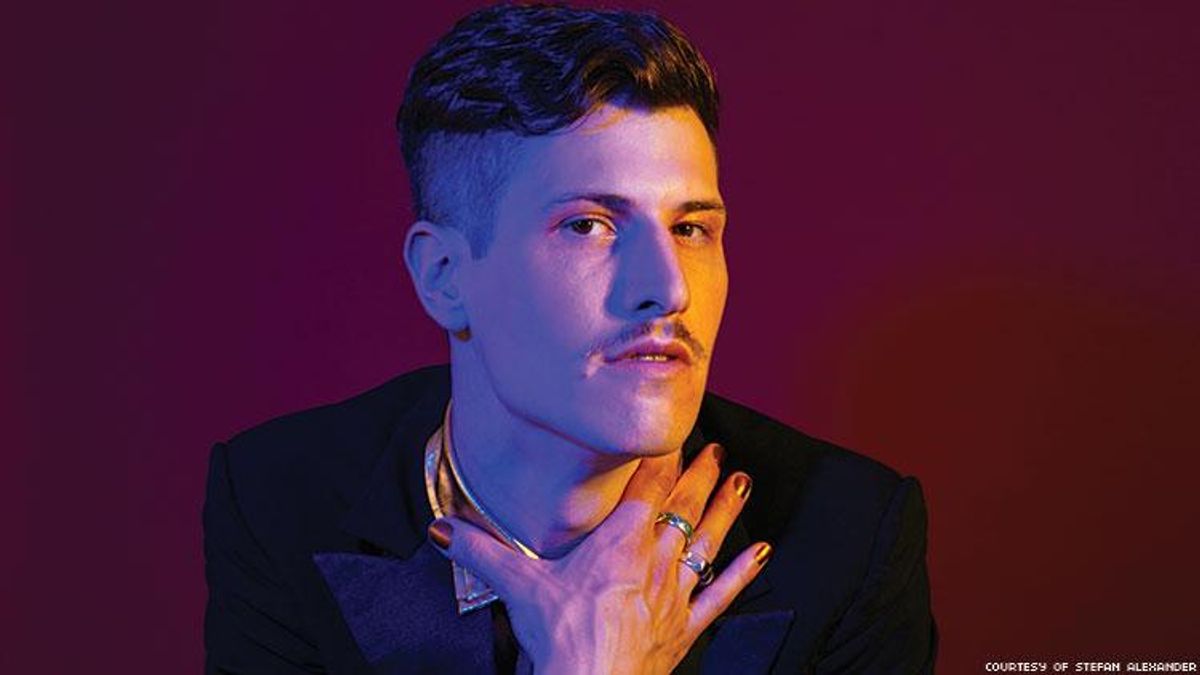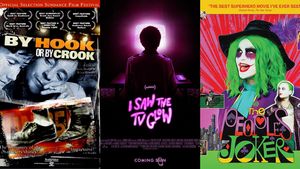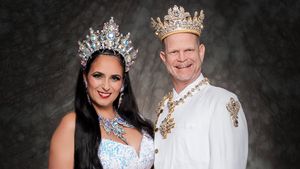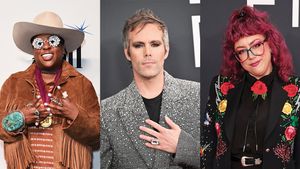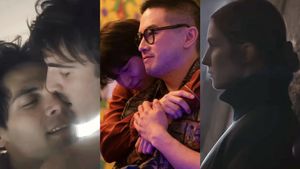In 2016, independent artist Stefan Alexander was on the cusp of a viable music career when his debut single, "Skeleton," garnered him praise from critics. Earmilk described the track as "haunting...a mix of R&B, pop, and electro fused together to create a compelling track that's perfect for blasting in your car or on a weekend night."
And then -- silence.
The queer singer and multi-instrumentalist (he plays mandolin, guitar, cello, piano, autoharp, and omnichord) dropped out of sight for years. He reemerged last summer with the EP Thunderclap, followed by a cover of the Tweet (feat. Missy Elliott) classic "Oops (Oh My)," and now, his latest EP, Cry Again, which dropped April 3. The Advocate spoke with Alexander about the chronic condition that sidelined him and how it changed him -- and his music.
What was it like to have your career interrupted by pain?
I dealt with debilitating chronic pain in my arms and my throat for several years, which prevented me from singing or playing my instruments. My time away from music was really difficult -- the most challenging years of my life thus far. It wasn't just the not being able to play, but also not knowing if I would ever be able to again. Being a musician has been the singular dream of my life since I was a little kid, so the idea that that dream might never come true was terrifying. I channeled all that creative energy into finding a cure and getting myself better. Now that I'm on the other side of that illness, able to play and sing again, I can see all the positives that came out of that trauma. I don't take making music for granted anymore. On a deeper level, I have so much more compassion and empathy for the many hardships that other folks are going through, pain-related or otherwise. In the end, that experience was truly a gift.
It took three years for you to get a diagnosis. Can you talk about that experience and what changed after the diagnosis?
I went to dozens of doctors and confused them all. I tried just about every treatment that anyone could think of, but nothing helped. I eventually took a trip to Minnesota to the Mayo Clinic [where] I found out I have a condition called central sensitization syndrome, where the brain can hardwire injuries so it keeps sending the same pain signals even after the body has healed itself. It's essentially phantom pain. The rehabilitation process has been extremely comprehensive. It's forced me to interrogate many aspects of my life, especially my relationship to pain and fear. I had to learn to play and sing through the pain instead of against it, to not let the flare-ups remind me of all the time I've lost and pull me into depression. Even though I'm still a neurotic person ... I've become so much more resilient.
How did that experience change your music?
My illness dramatically changed who I am as an artist. Before my pain symptoms started, I was primarily a folk musician. At the beginning, there was a year when I couldn't play guitar, but I could still sing. That limitation pushed me to find new ways to make music. I connected with producers and quite naturally transitioned to pop music. The subjects I choose to write about have also changed. I still just write from my experiences, but now there's a larger purpose. I want my music to motivate and uplift. I want it to make people feel loved and accepted and hopefully inspire them to be vulnerable with one another. I've found that the more transparent I can be in my songwriting, the more people reach out and tell me their own stories -- I'm also single, so slide into those DMs!
The other important difference between the artist I was then and now is in the way I present myself.... In 2016, I was closed off. I was still in the midst of chronic pain, only able to sing in the studio, numbing my symptoms by getting drunk. I barely wanted to show my face in my album artwork, and I was sexually ambiguous in my public persona. Now I'm as open as I can be. I have nothing to hide about my illness or my orientation. I make every artistic decision with the goal of connecting with people and inviting them in.
What makes your newer music different?
I don't write about the same thing twice. Keeping that rule pushes me to find subjects I haven't necessarily thought much about, maybe even issues within myself or in my past that are still unresolved. I hope to take complex ideas and emotions and distill them down into bite-sized pieces, easily understood after one or two listens. With my newer music, I've tried to tackle some more political topics. I'm writing about more overtly queer relationships and ideas. They're subjects I talk about all the time with friends, but it feels amazing to put them to music.
Listen to "Cry Again" below.
